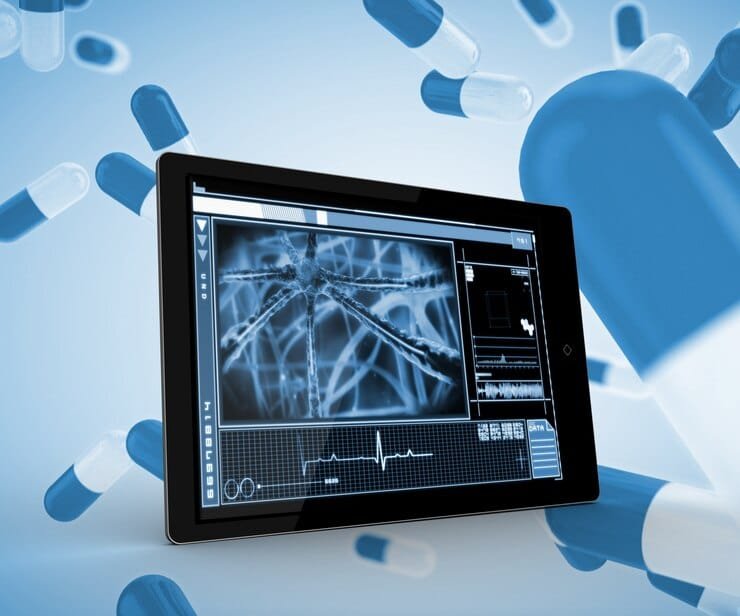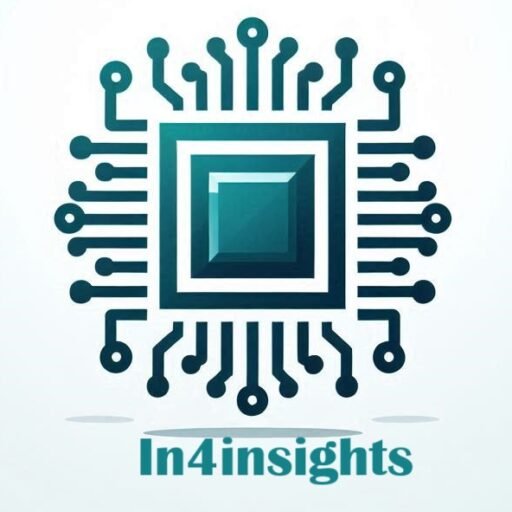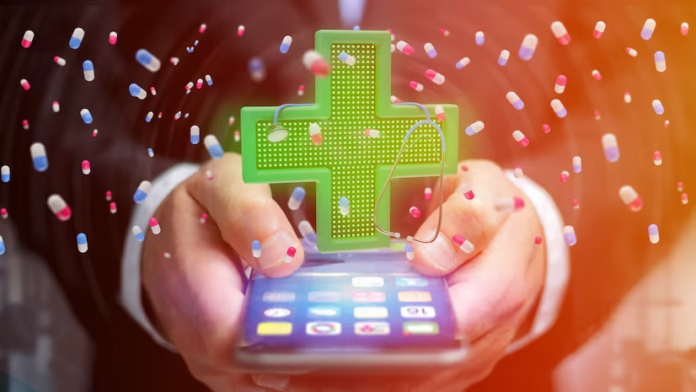Overview: Telemedicine’s Explosive Growth: Reshaping Medical Electronics Forever?
The Converging Tides of Healthcare and Technology
The global healthcare paradigm is undergoing a fundamental shift, driven by the rapid ascent of telemedicine and its dependent ecosystem of medical electronics. This transition is not merely an incremental improvement, but a disruptive force reshaping the very definition of healthcare access and delivery. The current telemedicine landscape is characterized by a proliferation of connected devices, from sophisticated remote patient monitoring (RPM) platforms integrating multiple bio-sensors (e.g., ECG, SpO2, blood glucose) to handheld diagnostic tools leveraging AI-powered algorithms for preliminary analysis. We’re witnessing exponential growth in the implementation of secure data transmission protocols (e.g., FHIR, HL7) to facilitate seamless information flow between patients, providers, and electronic health records (EHRs). This interconnected infrastructure is moving beyond simple video consultations, embracing remote surgical robotics, remote diagnostics using imaging modalities (e.g., teleradiology), and advanced home care monitoring.
The Transformative Impact and Technical Mandates
The significance of telemedicine devices in this evolving landscape is paramount. These sophisticated instruments are no longer peripheral additions but foundational pillars upon which future healthcare systems are being built. The benefits, from reducing healthcare costs and improving patient access to enabling proactive disease management and personalized care, are well-documented. However, this rapid expansion presents complex challenges for medical electronics professionals. Design mandates for ultra-low power consumption in wearable sensors to extend battery life are now crucial; the integration of cybersecurity protocols becomes non-negotiable due to increasing vulnerability to data breaches; and the need for interoperability and standardisation across different device platforms is creating unprecedented demands on engineering teams. Furthermore, compliance with stringent regulatory frameworks (e.g., FDA, CE marking) governing medical device development and deployment adds another layer of complexity. In essence, the “explosive growth” referenced in this blog’s title is not only quantitative but is profoundly affecting the technical and business landscape of medical electronics requiring a new approach to innovation, production, and lifecycle management. The following sections will delve into the specific challenges and opportunities, exploring the technological frontiers being shaped by this paradigm shift.
Telemedicine Devices Market: Key Trends and Strategic Implications
The telemedicine devices market is experiencing a dynamic period of growth and transformation, driven by technological advancements and evolving healthcare needs. Analyzing key trends provides critical strategic insights for businesses in this space.

I. Positive Trends: Catalysts for Growth and Innovation
- A. Enhanced Connectivity and 5G Adoption: The rollout of 5G networks is dramatically increasing bandwidth and reducing latency, enabling real-time remote diagnostics and monitoring. Impact: This facilitates high-fidelity remote patient interactions, including high-resolution video conferencing, remote ultrasound, and robotic surgery. Example: Companies like Teladoc are leveraging improved connectivity to offer complex diagnostic services remotely. Actionable Insight: Strategists should invest in devices optimized for 5G and explore novel applications that depend on low-latency data transmission. This includes remote surgery robots utilizing haptic feedback and AI-powered diagnostics.
- B. Miniaturization and Wearable Technology: The trend towards smaller, more discreet, and wearable devices is revolutionizing remote patient monitoring. Impact: These devices enable continuous physiological data collection (e.g., heart rate, SpO2, glucose levels) without requiring patient hospital visits. This proactive monitoring allows for early detection of potential health issues. Example: Companies like Dexcom with continuous glucose monitoring systems are showcasing the demand for wearable health technology. Actionable Insight: R&D investments should focus on enhancing sensor accuracy, data security, and battery life of wearable devices. Data analytics capabilities should be developed to leverage collected data for predictive health modeling and preventative care programs.
- C. AI and Machine Learning Integration: AI algorithms are being integrated into telemedicine devices to automate diagnosis, personalize treatment plans, and predict patient outcomes. Impact: AI can analyze vast datasets from remote monitoring devices, identify subtle patterns indicative of deteriorating health, and alert medical professionals, allowing for timely intervention. This accelerates diagnosis and improves the efficiency of medical staff. Example: AI algorithms can analyze electrocardiogram data streamed via a connected device, detecting anomalies in real-time, and providing an initial diagnosis for a physician to review. Actionable Insight: Invest in AI-driven diagnostic algorithms integrated into devices, focus on data security and privacy protocols to establish user trust, and offer clinician training to utilize AI effectively.
II. Adverse Trends: Challenges and Adaptations
- A. Data Security and Privacy Concerns: The increasing volume of sensitive patient data transmitted via telemedicine devices raises significant cybersecurity risks and privacy concerns, with breaches being costly and damaging to reputation. Impact: Legal and regulatory scrutiny will intensify, impacting device approvals and market adoption. Example: High-profile breaches of patient health data have eroded public trust in remote technologies. Actionable Insight: Implement robust end-to-end encryption protocols, ensure compliance with HIPAA and GDPR, and invest in robust security audits and vulnerability assessments. Building a transparent data privacy framework is crucial to gain and maintain consumer trust.
- B. Reimbursement and Regulatory Hurdles: Inconsistent insurance reimbursement policies and varying regulatory frameworks across different geographies limit market growth and create uncertainty. Impact: Companies face challenges in establishing standardized telemedicine programs and realizing sustainable revenue streams. Example: Difficulty in obtaining Medicare reimbursement for certain types of remote patient monitoring. Actionable Insight: Collaborate with industry associations to advocate for uniform reimbursement policies, develop robust clinical evidence supporting the efficacy of telemedicine devices, and work closely with regulatory bodies to navigate evolving guidelines. Establish clear pathways for product approval and reimbursement across key markets.
- C. Digital Divide and Access to Technology: Unequal access to broadband internet and technological proficiency can limit adoption of telemedicine devices, exacerbating health disparities, and potentially leaving populations without access to care. Impact: A lack of digital literacy, affordability, and infrastructure issues present a major challenge to equitable healthcare access. Actionable Insight: Explore partnerships with community organizations and healthcare providers to provide educational programs and low-cost device solutions, seek government grants and subsidies, and design more user-friendly and intuitive device interfaces for older and less tech-savvy patients.
Conclusion:
The telemedicine devices market is poised for significant expansion, but strategic success depends on effectively leveraging positive trends and proactively addressing the adverse ones. By focusing on enhanced connectivity, miniaturization, AI integration, data security, regulatory compliance, and equitable access, businesses can capitalize on growth opportunities while mitigating risks in this rapidly evolving healthcare landscape.
Real-World Applications of Telemedicine Devices Across Industries
Healthcare: In ambulatory care settings, portable ECG devices with Bluetooth connectivity are enabling real-time cardiac monitoring, particularly for patients with arrhythmias. This allows clinicians to make timely adjustments to pharmacological interventions remotely, reducing the frequency of hospital readmissions. Similarly, handheld ultrasound systems are being deployed in remote clinics, providing point-of-care diagnostic imaging which, combined with remote expert consultation via secure video links, addresses disparities in access to specialized medical care. This reduces the turnaround time on diagnoses and potentially leads to better clinical outcomes, quantified by a reduction in patient mortality and morbidity rates within participating populations.
Technology: Technology companies are integrating bio-sensor arrays within wearable devices, such as smartwatches, to track physiological data like heart rate variability (HRV), SpO2, and skin temperature. This data is then analyzed using machine learning algorithms to provide predictive health alerts, for example, identifying early signs of a potential fever or stress-induced cardiac events. Companies focusing on device management use proprietary APIs to access and process the data from multiple connected devices, providing a centralized dashboard for healthcare providers, and supporting patient self-management.
Automotive: The automotive industry is experimenting with in-cabin biosensors integrated into car seats and steering wheels. These sensors monitor driver fatigue and stress levels using galvanic skin response and pulse oximetry. Data is interpreted through embedded edge computing systems, which could trigger alerts or even partially engage autonomous driving features as a fail-safe mechanism. This integration enhances vehicular safety, with the objective of reducing accident rates attributed to driver impairment or distraction. Furthermore, these data points, if anonymized, contribute to understanding driver behavior and the development of more ergonomically designed vehicles.
Manufacturing: Within hazardous manufacturing environments, wearable telemedicine devices can monitor the physiological well-being of workers in real-time. Devices capable of measuring volatile organic compound exposure alongside core temperature and heart rate can immediately alert safety personnel to potential health emergencies such as heatstroke or toxic chemical exposure. This allows for swift intervention and potentially reduces the incidence of occupational injuries and illnesses. Data collected from these devices also serves as a critical feedback loop for refining safety protocols and optimizing working conditions. The application of AI driven anomaly detection is critical here for predicting potential health deteriorations in advance and thus prompting preventative measures.
Key Strategies in Telemedicine Devices (2023 Onwards)
Organic Growth Strategies
- Enhanced Device Integration & Interoperability: Companies are focusing on developing telemedicine devices that seamlessly integrate with existing healthcare systems and electronic health records (EHRs). For example, a portable ECG device now directly uploads data to a patient’s EHR, allowing physicians immediate access for remote consultations and diagnosis. This strategy improves workflow and reduces data silos.
- AI-Powered Diagnostics: Incorporating Artificial Intelligence (AI) algorithms for real-time data analysis is becoming a priority. This includes devices with AI-enhanced image processing for faster diagnosis of skin conditions or retinal scans, and intelligent sensors that can predict impending health issues using trend analysis. The advantage is improved accuracy and early detection.
- User-Centric Design & Enhanced Usability: Emphasis is on creating devices that are simple, intuitive, and easy to use by both patients and healthcare professionals, regardless of their technical background. This includes simplifying interfaces, reducing the need for technical setup, and offering multilingual support. The focus is on broadening adoption across a wider demographic.
Inorganic Growth Strategies
- Strategic Acquisitions for Portfolio Expansion: Companies are acquiring smaller startups with niche technologies to expand their product offerings. For example, a large telehealth company might acquire a firm specializing in wearable biosensors to offer a more comprehensive remote patient monitoring package. This reduces time to market with new technologies.
- Collaborations and Partnerships: Forming alliances with established healthcare providers, pharmacies, or technology firms to access wider distribution networks and integrate services is a key growth strategy. One example is partnerships between device companies and pharmacy chains for telemedicine kiosks in retail locations. This helps in wider reach and patient accessibility.
- Joint Ventures and Licensing Agreements: Telemedicine companies are also forming joint ventures to accelerate the development of new solutions and license intellectual property to rapidly expand their presence in new markets. An example is a device company jointly developing specialized telehealth tools with local tech firms in new geographies, sharing costs and resources. This increases speed of market entry in new territories.

Outlook & Summary: Telemedicine’s Impact on Medical Electronics
Projected Trajectory (5-10 Years): The next decade promises an unprecedented convergence between telemedicine and medical electronics. We anticipate a significant proliferation of remote patient monitoring (RPM) devices incorporating advanced biosensors – expect to see widespread adoption of wearable and implantable systems that continuously acquire physiological data (e.g., ECG, SpO2, blood glucose, intracranial pressure) and transmit it wirelessly via secure, low-power protocols like Bluetooth LE or cellular IoT. Further, expect a rapid expansion in point-of-care (POC) devices equipped for sophisticated diagnostic capabilities previously confined to lab settings. This will involve miniaturization of existing technologies, coupled with algorithmic improvements in signal processing and machine learning, enabling rapid, on-site analysis. We foresee a shift towards more integrated systems where telemedicine platforms act as central hubs, seamlessly processing data from multiple sources, employing predictive analytics, and providing actionable insights to clinicians. Quantitatively, the medical device market’s overall CAGR will be significantly influenced, with telemedicine devices poised to capture a disproportionately large segment of revenue growth and R&D investment (expect a >30% growth rate in telemedicine-related device segments, potentially driving a 10-15% overall growth in the entire medical electronics sector).
Key Takeaways: This article has highlighted telemedicine’s disruptive force in the medical electronics sector. The inherent shift toward remote, personalized care is not merely an evolutionary trend; it’s a fundamental restructuring of how healthcare is delivered and the technologies required. This requires not just advancements in hardware but also secure and interoperable software platforms for data management, and robust protocols for regulatory compliance given the sensitivity of patient data. The ripple effect is that traditional medical device companies must accelerate their R&D into connected and intelligent devices, while telehealth providers need to become more fluent in engineering to capitalize on the capabilities of advanced medical electronics. This symbiotic relationship will reshape the sector for years to come, driving innovation and market disruption.
Open Question: Given these expected technological advancements and shifting market dynamics, how are your organizations strategically positioning themselves to leverage the convergence of telemedicine and medical electronics for sustainable growth and patient centric outcomes?


